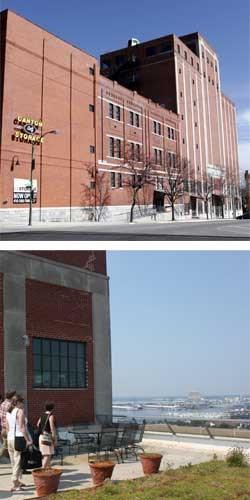Last updated: September 24, 2024
Article
Green Roofs on Historic Buildings: National Bohemian Brewery, Baltimore, Maryland

Buildings constructed: 1885-1960
Roof type: Extensive, tray system
Size: 14,500 square feet
Year installed: 2004
The owners of the National Bohemian Brewery ('Natty Boh') in Baltimore, Maryland, undertook a mixed–use rehabilitation that converted the defunct brewery into office space, storage, and retail. The owners wanted to integrate green features into the newly rehabilitated buildings to make them more sustainable and to take advantage of local energy tax credits as well as the Federal Historic Preservation Tax Incentives.

Among the new green features included in the project were green roofs on several of the brewing buildings. Because these buildings had flat roofs, they were great candidates for green roofs. The buildings were tall and had sufficient parapets so that the plantings were not visible from the public right of way. Railings were necessary for safety, and were installed at an angle to make them less visible from the street.
The extensive green roofs contained mostly sedums, low maintenance plants well suited to low water availability. The roofs were not constructed with permanent irrigation, so watering is required in the hottest months. They are not totally maintenance free, tenants or building managers must weed the green roofs several times a year. Originally the green roof spaces did not perform well, possibly due to the increased wind at the 8–10 story heights, and initial plant loss or damage from birds. But after several months the plantings were well established and flourishing. The Natty Boh buildings’ green roofs were installed with a modular tray system which was installed easily and can be lifted out for maintenance of the roof if necessary.

Courtesy of CBH Architects
In addition to the green roofs, the project incorporated sections of cool roof and some high albedo concrete, to further reduce the heat island effect on the property. In addition several former beer brewing tanks are used to collect and store rain water that is then redistributed throughout the building for various uses such as irrigation of the green roof and flushing of toilets.
